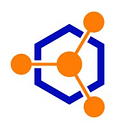How Bioanalytics Companies Are Revolutionizing Drug Development?
Drug discovery and development is a lengthy and costly initiative. Developing a novel drug product may take up to 10 years and $1 billion, making it one of the most complex endeavors. Bioanalytics companies have emerged as a reliable partners in accelerating drug discovery and development processes. Over the past few decades, bioanalytical companies have offered robust services for developing drug compounds. These services are now the foundational elements for numerous small and mid-size pharmaceutical companies. Let us understand the role of bioanalytics companies and the advanced bioanalytical services they offer for revolutionizing drug discovery and development.
Artificial intelligence for drug discovery and development
Conventional drug discovery and development approaches are expensive and time-consuming. A typical preclinical stage requires millions to billions of dollars and may take 3 to 6 years to complete. However, multiple AI-based bioanalysis services, such as cytokine assay services, are available to expedite drug development. AI tools are employed at almost every stage of development and discovery, offering the potential to change the future of the pharmaceutical industry. Let us explore some promising benefits of AI tools explored by assay labs and bioanalytical service providers worldwide.
Target identification: Today, AI models are trained during the target identification step using large datasets such as disease associations, omics datasets, clinical trials, research grants, publications, phenotypic and expression data, patents, etc, to decipher the underlying biochemical disease mechanisms and identify novel protein or gene targets to counter those diseases. Moreover, by combining AI with systems such as AlphaFold, scientists can now predict the 3D structures of protein or gene targets and fast-track the designing process of these drug products.
Molecular simulations: AI can facilitate molecular simulations that can run in silico. This approach reduces the physical testing of drug candidates and minimizes the costs associated with traditional chemistry testing.
Predicting drug properties: Some AI tools can bypass simulated drug testing and predict critical properties such as bioactivity, toxicity, and physicochemical characteristics.
De novo drug design: Although traditional drug discovery involved screening large candidate molecule libraries, some AI systems are now capable of developing novel molecules from scratch.
Drug prioritization: specific AI ranking systems can rank molecules identified during the initial screening process and outperform traditional ranking approaches.
Synthesis pathway generation: AI tools are playing a significant role in aiding theoretical drug design. AI-based systems can generate drug synthesis pathways for developing hypothetical compounds. Besides, AI systems can also suggest changes in current compounds to streamline their manufacturing process.
Must Read: How PK/PD analysis is used to optimize drug development processes?
Data-driven drug discovery and development
Today, innovative approaches in the biopharmaceutical domain are a necessity. Data analytics-based bioanalysis services have resulted in the emergence of a new era in drug development approaches. Data-driven methods have transformed drug discovery and development. Earlier, developing drugs was much more costly and time-consuming. Today, data analytics has accelerated drug development and reduced expenses. Predictive drug modeling can help identify promising drug candidates based on chemical structures, potential interactions, and historical data.
Data analytics incorporates real-world evidence in clinical trial processes. Data obtained from wearable devices and electronic health records help researchers refine clinical trial protocols and evaluate the effectiveness of drug molecules in real time. Besides, data analytics optimizes patient population, sample size, and trial design. This intervention results in better-informed decisions and efficient clinical trials, eventually accelerating drug discovery and development processes.
Data-driven approaches can help identify adverse events and assess their risks. Machine learning algorithms screen through large volumes of data and identify signals and patterns, protect patient records, and save from mistakes such as costly recalls. Moreover, data analytics are one of the most important forces driving personalized medicine. Advanced analytics combined with personalized genetic data are necessary elements of personalized medicine. Pharmacogenomics identifies specific genetic markers that influence therapeutic responses, minimize adverse reactions, and increase treatment efficacy.
Most importantly, data-driven methods ensure the proper application of sensitive patient data and help streamline regulatory requirements for data security and privacy. Furthermore, data analytics simplifies the collection and reporting of data, ensuring compliance and expediting new treatment submissions.
Revolutionizing drug discovery and disease modeling
The pharmaceutical industry is constantly on the lookout for efficient alternative approaches to animal studies. A recent US act for the modernization of the FDA granted permission to assess experimental drugs using advanced non-animal-based approaches. Traditionally, animal models have been used in drug discovery and disease modeling to identify novel therapeutic targets and evaluate efficacy, toxicity, and drug dosing.
However, the primary obstacles to drug discovery and development are the reproducibility and human physiologically relevant outcomes related to current 2D in vitro and animal models. Today, bioanalytical companies can overcome these limitations by employing next-generation organ-on-chip platforms. These novel methods have potential applications and can replace current in-vivo animal models. These complex in-vitro microphysiological systems have proven to be a powerful tool in mimicking the human body and providing deep insights into organ functionality and pathophysiology.
